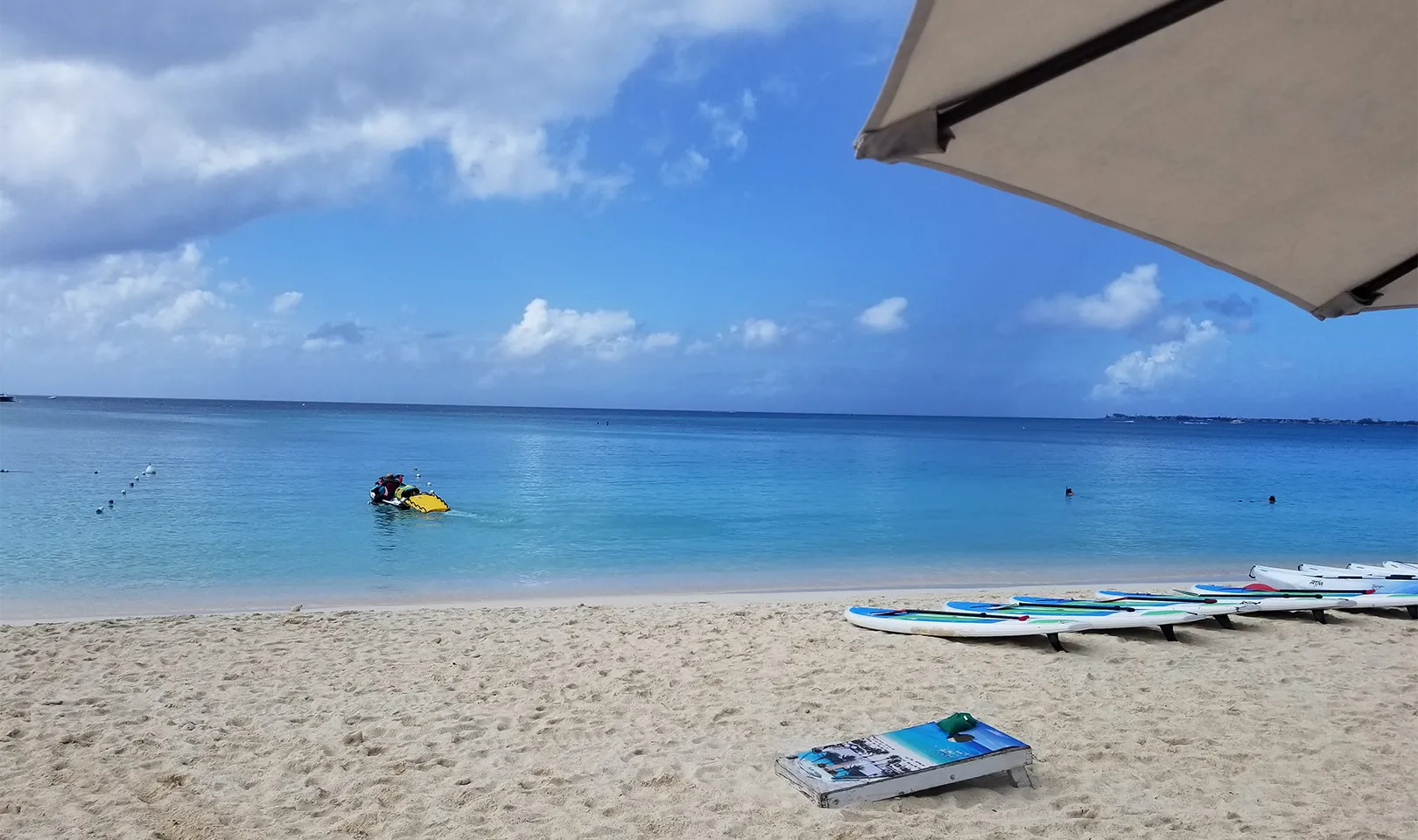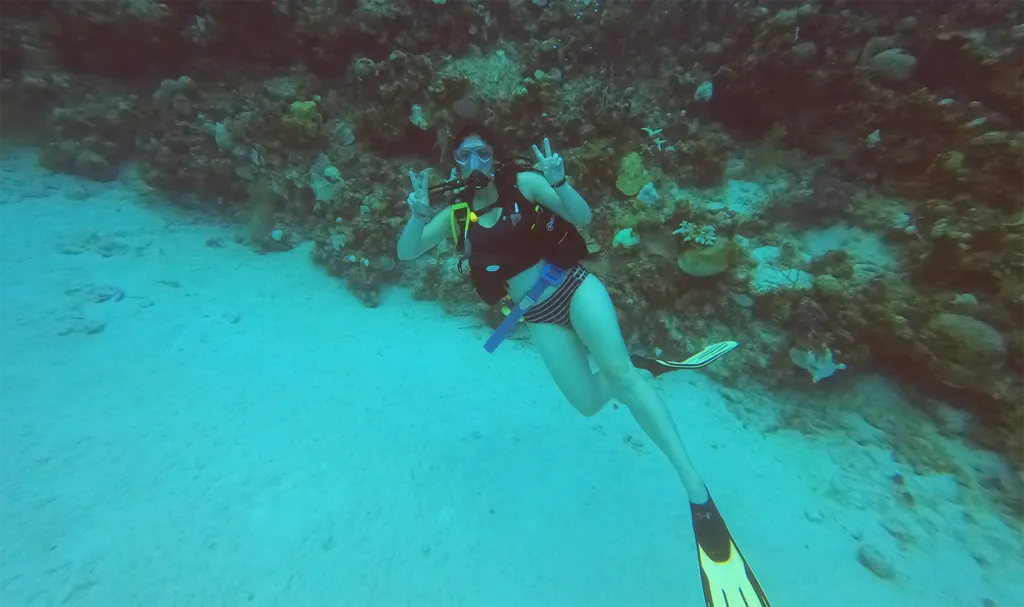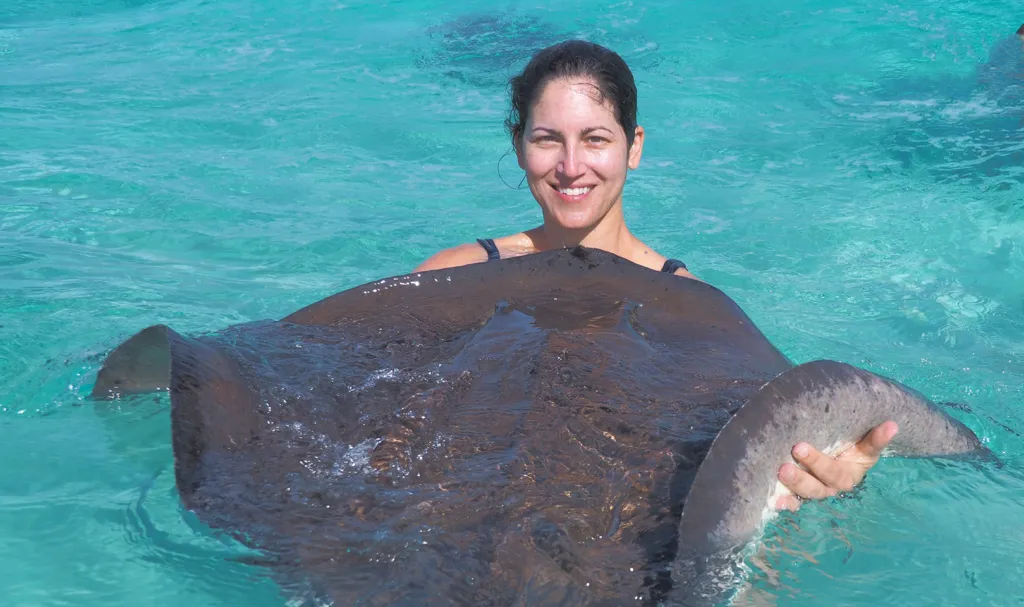CE Paradise: Balancing Work and Play in Grand Cayman


As an IndeVet, I have complete control over my schedule, and like other associate vets, I have a generous continuous education (CE) fund. So, I decided to get my hours overseas this year and add some vacation time. Why not?
I consider myself a general practitioner and rarely deal with true emergencies. However, since becoming an IndeVet, I have noticed that more and more sick patients are coming into locations that are either too far away from the ER or owners need more funds. In these cases, I am becoming the last line of defense. I realized I needed to improve my ER skills and knowledge to help them.
Last year, I wrote a blog for new grads in which I recommended that when doing CE, you try to balance your hours with topics you like and stuff you need to work on. So, this year, I decided to attend a dedicated Emergency and Critical Care conference. I heard about a company called VetVacationCE ( www.vetvacationce.com) that specializes in CE for vets all around the country and a few locations worldwide. (In summer 2024, they are going to Africa!) I wanted sun, sand, and scuba; conveniently, they had a trip to Grand Cayman this past November, and the whole weekend was just emergency and critical care. Perfect! Tickets were booked, and I was on my way.
I spent a week in the fun and sun. I attended three days of lectures and stayed for three days of vacation.
3 things I learned from CE:
Blocked cats
I don’t see these very often, thankfully, but the ER lectures had several significant points that are helpful to me as a GP. First, it doesn’t make a difference in the time it takes to place the urinary catheter or the outcome regarding the risk of bladder rupture; if you decompress the bladder before putting in a urinary catheter, go ahead and place the catheter. Secondly, try not to unblock and send them home; they have 3.7 times the risk of reblocking. With a one-time catheterization, they have a higher risk of RUO < 30 days after treatment vs cats that had in-dwelling cath for a few days. However, this is sometimes done due to client finances/permissions; just let the owner know of the risks of reblocking if the owner elects to unblock and pursue outpatient care. Lastly, blocked cats are also at higher risk of reblocking if the catheter is removed before the urine returns to normal, so leave it in until normal urine output is achieved.
IV Lipid and total plasma exchange for drug toxicities
Some toxins respond very well to IV lipids. It creates a lipid sink in the plasma to increase clearance time out of the body. This treatment is very effective for NSAID toxicities in particular. Clinical signs started to improve 3 hours after starting treatment in one study involving Ibuprofen toxicity. Most toxin cases are going to be accidental ingestion. So, remind owners to keep their and their pet’s medications secure. Another way to remove toxins from the body is through Total Plasma Exchange (TPE). This treatment is for drugs that stay in the plasma, I.e., NSAIDs. Blood is removed from the body, the plasma is centrifuged off, then replaced with clean donated plasma, and both are transfused back into the pet. IV lipid therapy is widely available. TPE is expensive and only available at large referral centers and vet schools.
Seizure refresher
First, make sure the pet is actually having a seizure versus a syncopal episode. If the owners have a video of the event (if not actively seizing in the hospital), that’s even better. For an owner, these events seem similar and scary. The biggest difference is how the pet recovers afterward. Syncope pets tend to bounce right back afterward as if nothing has happened. In contrast, seizure dogs will almost always have a post-ictal period. Second, try to figure out the cause of the seizure; young dogs vs old dogs will have different differentials. And in case you have forgotten the mnemonic VITAMIN D (like I did from vet school), here it is again: Vascular, Infectious/Inflammatory/Idiopathic, Traumatic, Autoimmune, Metabolic, Iatrogenic, Neoplastic, Degenerative. The main question usually is … when to start treatment. The International Veterinary Epilepsy Task Force put out a proposal for this in August 2015. This proposal is based on current published literature and reflects the author’s experience. If a pet has two or more seizures within six months, a cluster of more than 3 in 24 hours, status epilepticus, a prolonged post-itcal period, or if the frequency/severity of the seizures themselves or post-itcal period is increasing in severity, then they qualify for medications. Pets may exhibit more than one of these signs. The report also has a section on medication choices. I’ve provided the link to the paper below.
3 things I did on vacation:
Scuba diving
The Cayman Islands are known for some of the best scuba diving in the world. I went on three dives and saw two wrecks! They purposefully sank the USS Kittiwake a while back, and it was incredible to catch it in person. There were many types of fish, angels, puffers, a barracuda, and we even saw an eel! Thankfully, there were no sharks on this trip. Thanks to Dr. Tara, my dive buddy and speaker for the conference, for the photo!

Swimming with the stingrays
There is a small shallow spot in the north part of the bay called Stingray City, where stingrays have been habituated over the years to interact with people. The guides help you hold them; if you are lucky, a wild one will swim up to you. It actually happened to me. I felt I had been chosen! What a fantastic experience to have a wild animal sit in your arms and stay there willingly. There must have been 50 swimming around us!

Sunset sail
The local dive shop runs a sunset sail on their catamaran every evening. What better way to end the day than under sail, cruising up and down Seven Mile Beach?

Another year of CE and travel has come and gone. I am thankful to keep learning and keep traveling. Where should I go next year? I am open to suggestions!
